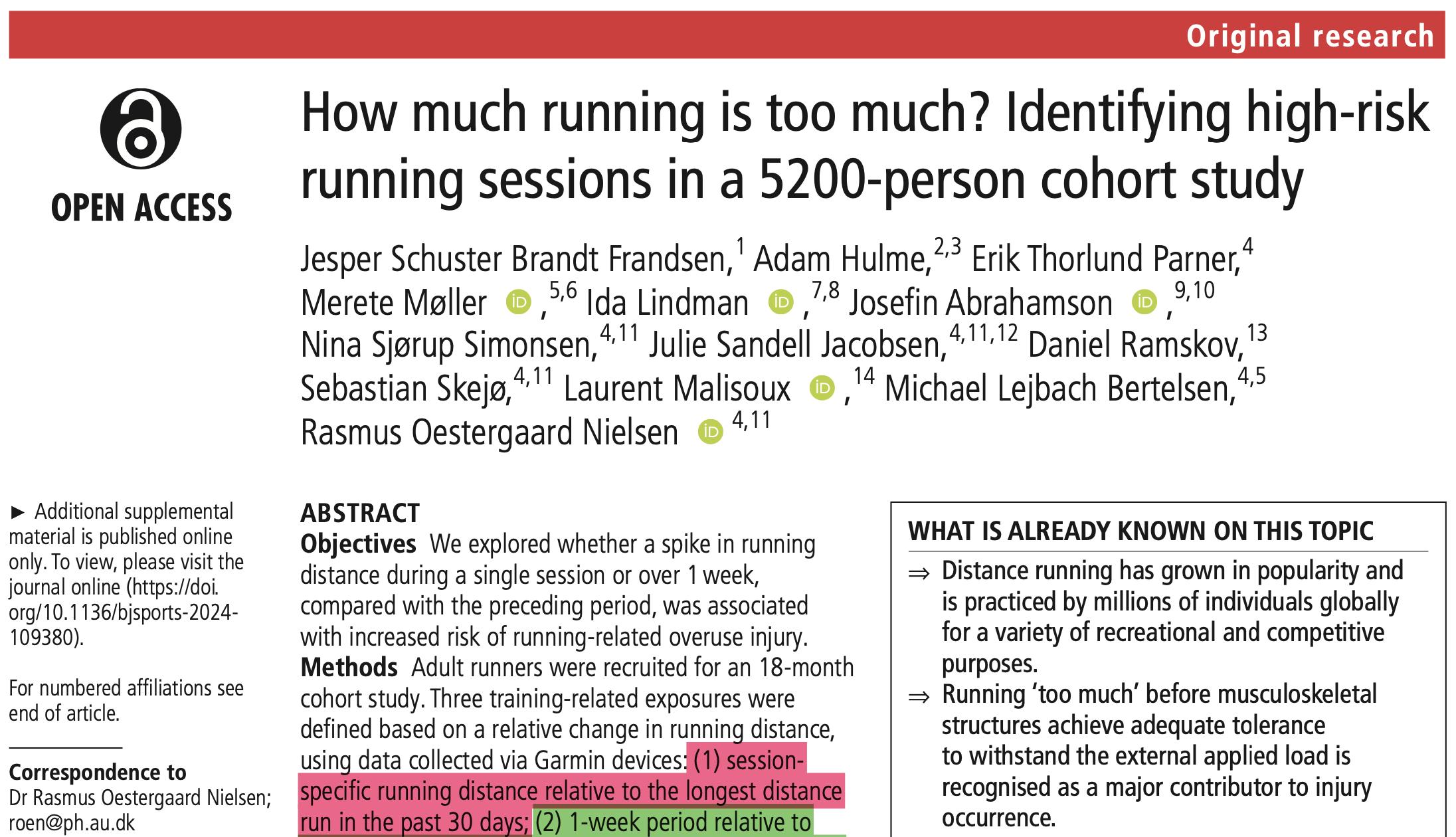Decrease Your Risk of Injury
We’ve all been there. You’re having a great day, your body feels fantastic, and you decide to push your workout a little further than planned. You run an extra mile, hit another bucket of balls, or add more weight to the bar. It feels great in the moment, but the next morning, a new ache or pain has appeared, sidelining you for days or even weeks.
It's the most common way active people get hurt, and it all comes down to a simple question: How much is too much on any given day?
For a long time, the answer has been a frustrating "it depends." But a cutting-edge study that tracked over 5,000 runners for 18 months has given us a powerful guideline to help answer that question. This research gives us what we can call the 10% Guideline. While the study focused on running, the principle behind it applies to nearly any physical activity, because it’s not about the sport—it's about how our specific tissues adapt to stress.
The 10% Guideline: A Simple Guardrail for Your Training
The guideline is incredibly straightforward:
Your longest or hardest workout should not exceed your longest or hardest workout from the past 30 days by more than 10%.
This simple concept acts as a guardrail, preventing you from making the kind of sudden jump in training that so often leads to injury. While it may sound too simple to be effective, it’s backed by an 18-month study that came out of decades of research searching for a way to decrease the risk of injury.
The Science Behind the Guideline
This 10% guideline comes from an 18-month study on 5,205 runners. Researchers tracked the distance ran for each individual session using data from participants' Garmin watches and used weekly questionnaires to log injuries. The goal was to find the exact point where injuries spiked.
The results showed that the single biggest predictor of injury wasn't a runner's weekly mileage or how many days they ran. It was a sudden spike in the distance of a single running session.
The data showed:
A "small spike" of 10% to 30% in a single run increased the immediate rate of injury by 64%.
A "large spike" of more than 100% (doubling your longest run) increased the rate of injury by a staggering 128%.
This single-day guideline was found to be a much more accurate predictor of injury for runners than traditional weekly models that many plans are based on. While these numbers show a strong correlation, it’s important to remember that injury risk is complex. This guideline simply helps us manage one of the biggest variables: a sudden spike in load.
Why This Single Day Is So Important
The 10% guideline works because it respects a fundamental principle of physiology: tissue-specific adaptation.
Your body doesn't just get "fit" in general; your muscles, tendons, ligaments, lungs, and even heart adapt specifically to the loads they experience. If you consistently run 5 miles, your Achilles tendon and calf muscles become very good at handling the specific stress of a 5-mile run. However, they are still effectively deconditioned for the demands of an 8-mile run. The thousands of extra steps in those additional 3 miles represent a shock to an unprepared system.
This highlights how your body adapts. Your heart and lungs might feel great and ready for more, but your local tissues have a limit based on their recent training history. The 10% guideline helps you avoid pushing those tissues too far past what they are prepared to handle, giving them time to safely adapt and grow stronger.
How to Apply the 10% Guideline to Your Training
While the study focused on running, we can apply this principle to other activities as well. Here’s how you can apply this guideline to help decrease your risk of injury.
For running, if your longest run in the past month was 5 miles, your next "long run" should be no more than 5.5 miles.
For weightlifting, if your heaviest squat in the past month was 200 lbs for 5 reps, a 10% jump would be 220 lbs for 5 reps. This also applies to total volume (sets x reps x weight).
For golf, if you normally hit a bucket of 150 balls at the range, splitting an extra bucket with a friend is a better idea than nearly doubling your total volume just because you have an extra hour.
For activities like pickleball, tennis, or baseball, this can apply to serves, pitches, or time played. If you typically play 4 games of pickleball, jumping to 8 is a 100% spike. Playing one or two extra games is a more sensible progression.
Train Smarter, Not Just Harder
Reducing your risk of injury isn’t about perfect training. It’s about smart training. When it comes to reducing our risk of injury the 10% guidelines is a great place to start. It’s not about limiting your potential; it's about providing a simple, evidence-based guardrail. It allows you to train consistently, which is the true secret to building a strong, resilient body that stays in the game for the long haul.
The Issue with Guidelines
It's important to put guidelines like this in their proper place. We get stronger and stay active for the freedom it brings—the ability to take that longer run on a perfect day or hit an extra bucket of balls with a friend. The risk of any guideline is that it can feel like it restricts that freedom.
So, treat this 10% principle as a tool for understanding, not a command. Its purpose isn't to prevent you from ever having fun, but to help you connect the dots. Now, when you notice that extra soreness after pushing it a little further than normal, you won't be left wondering what went wrong. You'll know why, and that knowledge is the key to smarter, more effective training in the long run.
